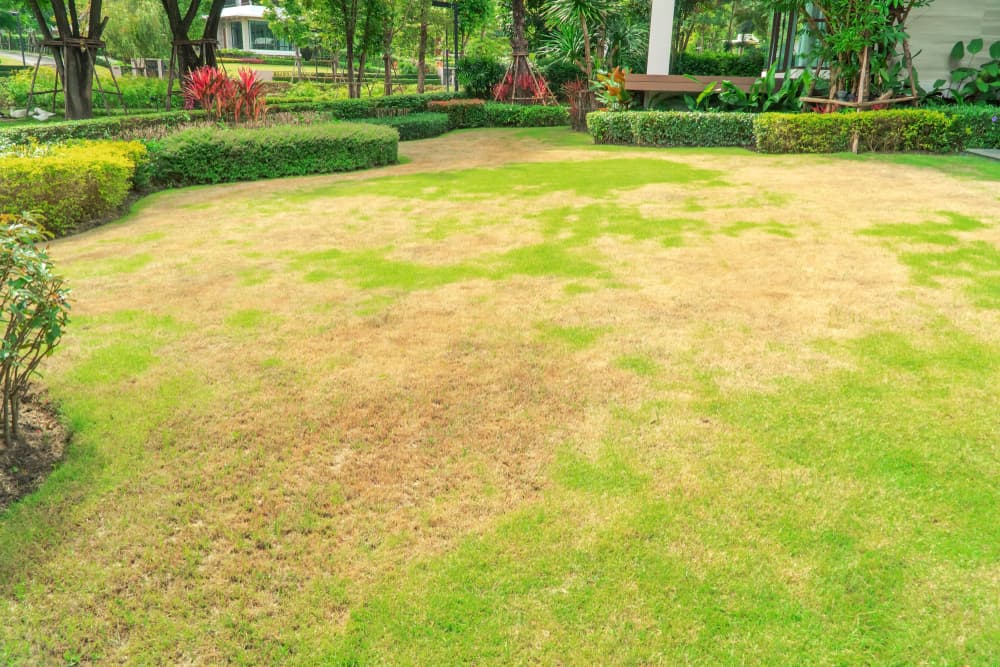Overseeding a lawn will enhance the appearance of your yard, but it can also help improve soil quality by adding organic matter. It’s important that you know what kind of grass is growing in your area before deciding whether or not to overseed.
If your lawn is looking tired and worn out, then overseeding may be just what you need to rejuvenate it. If you are considering overseeding for the first time, here’s everything you’ll want to know about the process so you get started right.
How Do I Know When My Lawn Needs Overseeding?
The best way to tell if your lawn needs overseeding is to look at the condition of the turf itself. The most obvious signs include:
- Thinning areas where there used to be thick growth
- Areas with Bare Patches
- Stained Spots
- Yellowing Leaves
- Patchy Weeds
- Poorly Maintained Borders
When you notice these problems, it might be time to consider overseeding. However, keep in mind that some conditions cannot always be fixed through overseeding alone. For example, if your lawn has been damaged from drought stress, you won’t see any improvement until after rainfall.
What Kind of Grass Seed Should I Use?
There are several different types of grasses available for overseeding purposes. They all differ slightly in their characteristics, which means they require varying amounts of care. Here’s a brief overview of each type of grass and what makes them unique:
Fescue – Fescues are low-growing perennial grasses native to Europe and Asia. Their long roots enable them to thrive in poor soils and withstand dry climates. While fescues do well in warm regions, they prefer cooler ones. Some varieties tolerate shade better than others.
Sodgrass – Sodgrasses are short-lived perennials that originate from North America. These grasses typically grow up to three feet tall and spread quickly. Because they take longer to mature, sodgrass doesn’t work very well in places like Florida where summers are extremely humid.
Bermuda – Bermuda grasses originated in tropical parts of South America. Like other Bermuda grass species, they produce dense clumps of foliage that provide excellent coverage. Bermuda’s are considered one of the fastest growing grasses out there. But they need lots of water to survive. If left unattended, they’ll eventually die off due to lack of moisture.
Zoysia – Zoysia grass is another fast-growing grass that originates from Japan. Its leaves are dark green and stiff, which helps prevent wind damage. This variety grows slowly but steadily throughout the entire season.
Kentucky Bluegrass – Kentucky bluegrass is known for being hardy and resilient. The plant produces thick stems with deep root systems that help it endure droughts and floods. It requires moderate levels of sunlight and average soil fertility.
When to Overseed
Overseeding should be done in spring or fall if possible. Spring time is best because it’s warmer than summer, so seeds are more likely to germinate at that time of year. Fall is also good for two reasons: First, there aren’t as many weeds around then, making it easier to see where you’re planting; second, the weather isn’t too hot yet, so your plants won’t have trouble growing.
However, if you live somewhere cold enough that winter temperatures don’t allow for proper seed germination, you can still overseed during the colder months. Just make sure to protect your newly seeded lawn from harsh winds and heavy rain.
Why Overseed?
Overseeding helps create thicker turf by adding more organic matter into the ground than just mowing alone would do. It also adds nutrients that make it easier for plants to grow. In addition, overseeded lawns tend to be healthier because they have less competition with other types of vegetation. Finally, overseeding makes your lawn look better because it creates an even surface. You’ll notice this difference right away!
How Long Does Overseeding Take?
It depends on the size of your yard, but generally speaking, overseeding takes anywhere between six months and four years. Keep in mind that the process is ongoing; you should continue doing these things year after year.
What’s Next?
Once your lawn looks good again, stop watering it regularly. Letting it dry out encourages the grass to develop deeper roots. As long as you remember to water it at least twice a week, everything should work itself out fine.
Have questions about overseeding? Leave us a comment below!


